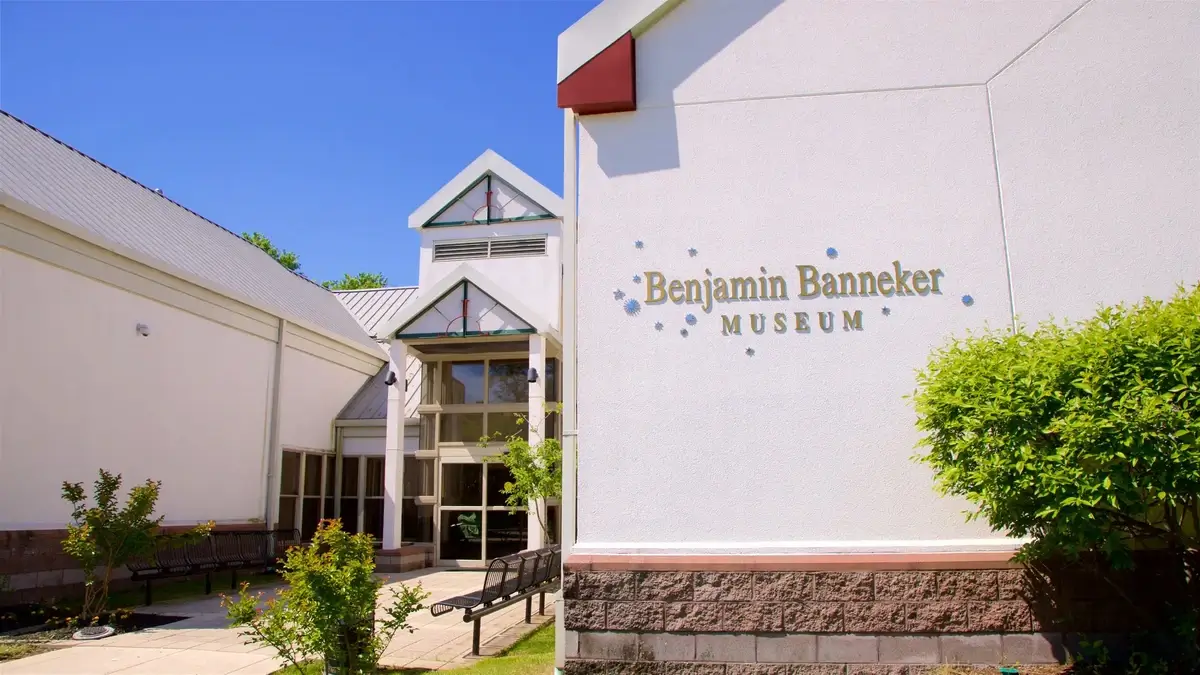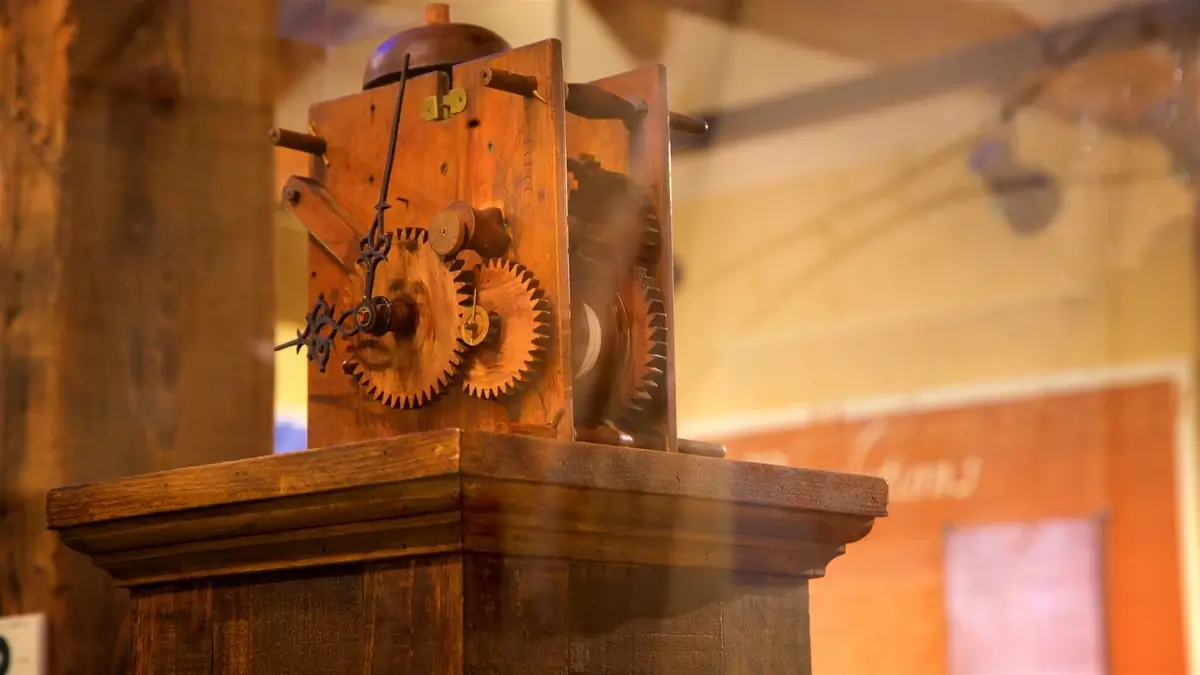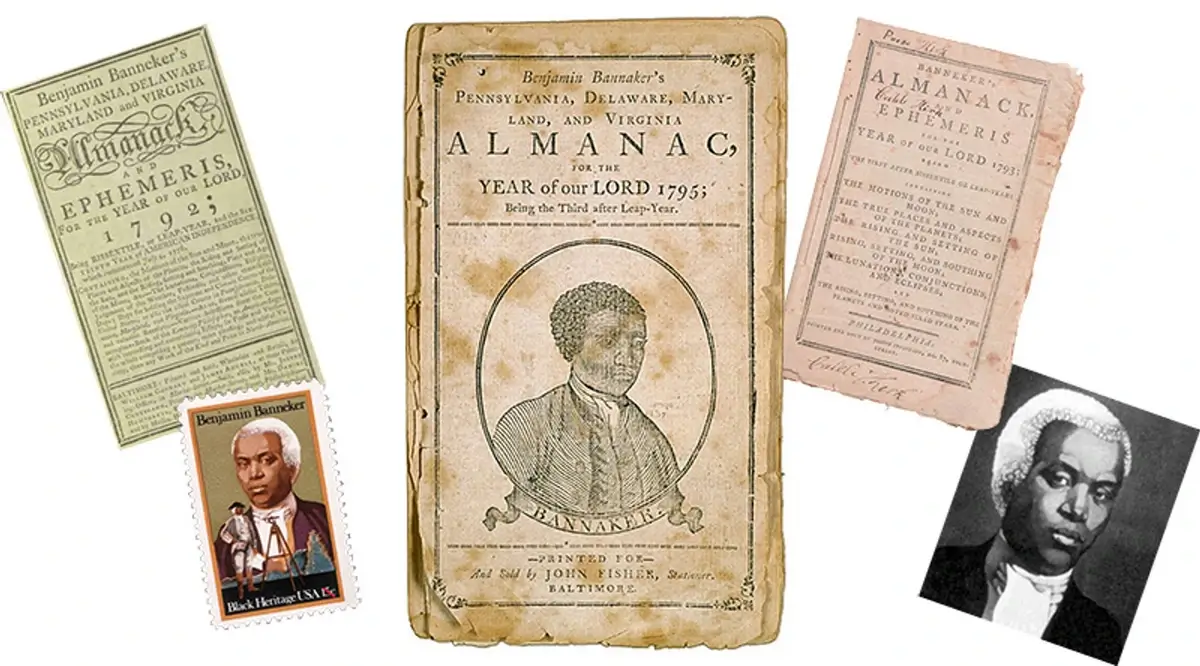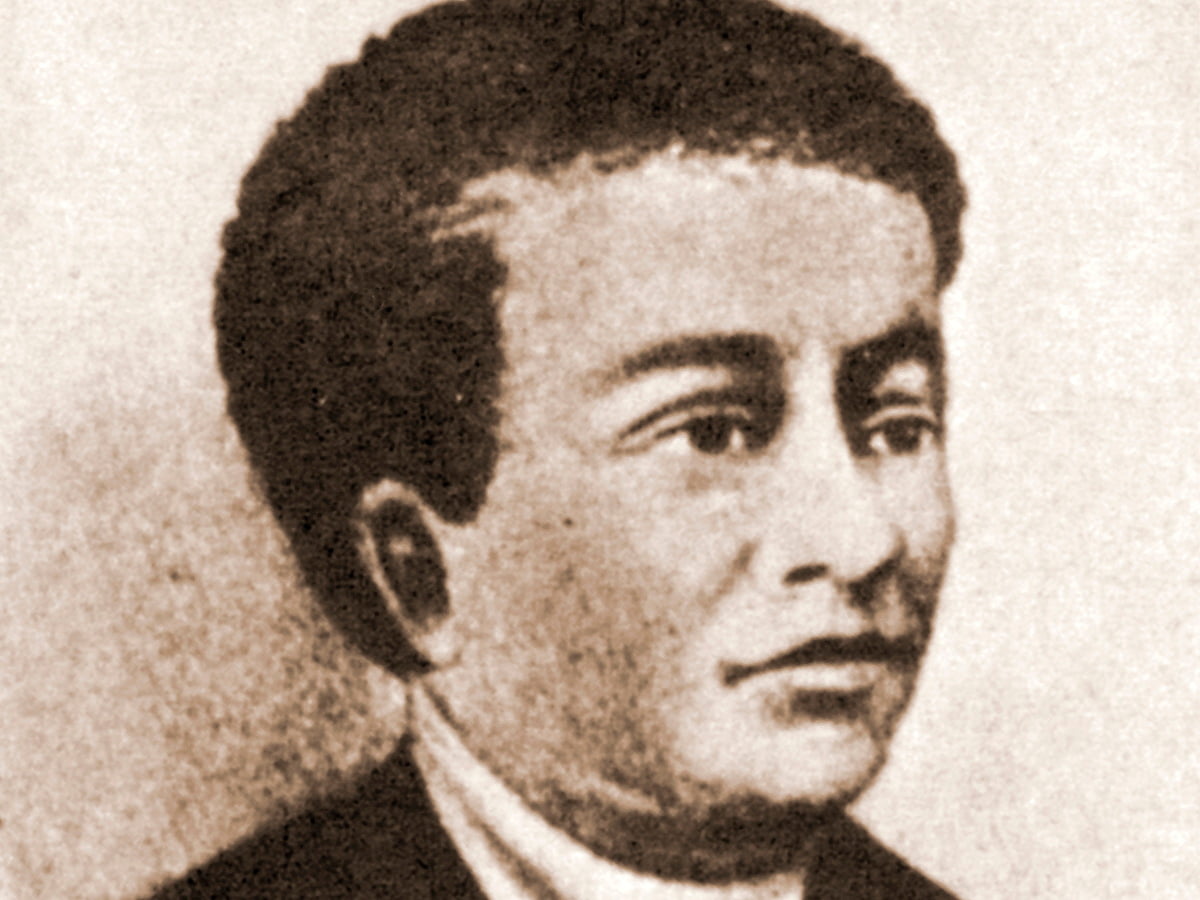Benjamin Banneker’s story is packed with astounding achievements that defy the limitations of his time. Imagine constructing a wooden clock that runs for 40 years, or predicting a solar eclipse with precision in the 18th century.
Banneker was not only a brilliant self-taught mathematician and astronomer but also played a crucial role in surveying Washington, D.C. His relentless pursuit of knowledge and advocacy for social justice, including a bold critique of Thomas Jefferson’s views on slavery, make his life a fascinating study. Get ready to delve into fun facts about Benjamin Banneker that highlight his remarkable contributions to history.
1. Self-Taught Genius
Benjamin Banneker, born in 1731 in Baltimore County, Maryland, was an extraordinary self-taught mathematician, astronomer, and inventor. Despite having limited formal education, Banneker’s intellectual curiosity and determination led him to become one of the most notable African American scientists of his time.
Banneker’s early education was primarily from a Quaker school, but his most significant learning was self-directed. He delved into advanced mathematics and astronomy, fields dominated by formally educated scholars. His achievements include accurately predicting a solar eclipse in 1789, which contradicted predictions made by prominent astronomers of the day. This feat alone highlighted his exceptional skill and deep understanding of celestial movements.
In addition to his astronomical work, Banneker constructed one of the first known wooden clocks in America at the age of 22. This clock, modeled after a borrowed pocket watch, ran accurately for over 50 years, demonstrating his engineering prowess. Banneker’s almanacs, published annually from 1792 to 1797, were renowned for their precise calculations and became valuable resources for farmers and navigators.
2. Real-Life FarmVille Master
Benjamin Banneker was not only a key figure in designing Washington, D.C., but he was also an accomplished farmer. Banneker’s involvement in the nation’s capital came when he was hired by surveyor Andrew Ellicott in 1791. For three months, Banneker worked on establishing the boundaries of what would become Washington, D.C., utilizing his skills in astronomy to make precise observations that guided the placement of boundary stones.
On his family farm, Banneker showed remarkable ingenuity. Taking over operations at the age of 15, he enhanced the irrigation system his father built, which significantly improved the farm’s productivity. He managed the farm until he was 59, applying his keen mind to agricultural practices while also teaching himself advanced mathematics and astronomy.
3. Timekeeping Whiz

Image: Expedia.com
Benjamin Banneker, a brilliant self-taught astronomer, gained significant recognition for his ability to predict a solar eclipse in 1789. Despite limited formal education, Banneker meticulously studied the night sky using books and a telescope borrowed from his friend, George Ellicott. His prediction of the April 14, 1789, solar eclipse astonished many, including notable scientists of the time who had not anticipated the event. This achievement underscored Banneker’s exceptional skills and solidified his reputation as a capable and knowledgeable astronomer.
His accurate eclipse prediction also contributed to his credibility when he published his first almanac in 1792, filled with astronomical calculations and weather forecasts. These almanacs were widely regarded for their precision and utility, further showcasing Banneker’s talent in astronomy and mathematics. His works were supported by abolitionists who saw them as proof of the intellectual capabilities of African Americans, bolstering the fight against slavery.
4. Jefferson’s Critic
In 1791, Benjamin Banneker took a bold step by writing a letter to Thomas Jefferson, challenging his views on slavery. Banneker, a free African American, sent this letter along with a copy of his almanac. He aimed to remind Jefferson of the principles he had laid out in the Declaration of Independence, particularly the idea that “all men are created equal.” Banneker argued that the continued enslavement of African Americans contradicted these principles.
Banneker’s letter highlighted the irony of Jefferson’s stance on liberty and equality while owning slaves. He pointed out that the fight against British tyranny should have made Jefferson more sympathetic to the plight of enslaved people. This letter was not just a critique but a call for Jefferson to use his influence to promote the rights and freedoms of African Americans.
Jefferson’s response was politically cautious. He acknowledged Banneker’s talents and assured him that he wished to see the end of slavery, but his actions did not align with this sentiment. Despite the limited immediate impact, Banneker’s letter remains a significant historical document, showcasing the courage and intellect of African Americans challenging systemic injustices at a time when it was incredibly dangerous to do so.
5. Wooden Clock Wonder

Image: expedia.ca
Benjamin Banneker’s most famous invention is a wooden clock he built in 1753, which continued to run for over 40 years. This clock is celebrated as the first wooden clock constructed entirely in America. Remarkably, Banneker created the clock by carefully studying a pocket watch he borrowed. He disassembled the watch, meticulously measured its components, and crafted wooden replicas of each part. This achievement was particularly impressive given that Banneker was largely self-taught in both mathematics and mechanics.
The clock not only marked the hours accurately but also demonstrated Banneker’s profound understanding of mechanics and engineering. It is said that the clock’s reliability and longevity astonished many during his time. Banneker’s clockmaking skill was just one facet of his wide-ranging talents, which included astronomy and surveying. His contributions to early American science and engineering continue to be recognized and celebrated today.
6. Published Almanacs

Image: bannekerstore.com
Between 1792 and 1797, Benjamin Banneker published six annual almanacs, gaining widespread acclaim for their accuracy and quality. These almanacs included information on weather predictions, tide tables, and astronomical data, reflecting Banneker’s expertise in astronomy and mathematics. His publications were well-regarded and compared favorably to those of Benjamin Franklin’s renowned Poor Richard’s Almanac.
Banneker’s almanacs were a testament to his meticulous calculations and observations, contributing significantly to the scientific and agricultural communities of his time.
7. Inspired by Grandmother
Benjamin Banneker’s interest in mechanics and intellectual pursuits was significantly influenced by his grandmother, Molly Walsh. Molly, an Englishwoman who came to America as an indentured servant, played a pivotal role in Banneker’s upbringing. She taught him to read using the Bible, instilling a love for learning in him from a young age.
Molly’s resilience and dedication to education were crucial in shaping Banneker’s future endeavors in astronomy, mathematics, and clockmaking. Her influence was instrumental in nurturing his curiosity and talents, which eventually led to his remarkable achievements.
8. Cicada Predictions
Benjamin Banneker, a renowned African American scientist and polymath, made a significant contribution to entomology by accurately predicting the 17-year emergence cycle of cicadas in 1791. His meticulous observations began in 1749 when he first documented a cicada swarm on his Maryland farm.
Over the years, Banneker recorded subsequent emergences in 1766, 1783, and 1800, meticulously detailing their life cycle in his journals. His writings, which survived thanks to preservation efforts, revealed a profound understanding of the cicadas’ periodic nature, an insight ahead of its time and often overlooked in historical accounts of his work.
9. Support from the Ellicott Family
Benjamin Banneker’s intellectual pursuits were greatly aided by the Ellicott family, notable Quaker surveyors and mill owners. The Ellicotts, particularly George Ellicott, provided Banneker with essential scientific books and instruments that were otherwise inaccessible to him. These included works on astronomy and mathematics, which played a crucial role in his self-education.
George Ellicott also lent Banneker astronomical tools like a telescope and drafting instruments, enabling him to make precise astronomical calculations and observations . This support was pivotal in Banneker’s successful creation of his almanacs and his work in surveying Washington, D.C.
10. Surveying the Capital
Benjamin Banneker’s contribution to surveying Washington, D.C. was pivotal in the creation of the U.S. capital. In 1791, he was recruited by Andrew Ellicott to assist in surveying the boundaries of the new federal district. Banneker’s precise calculations and understanding of land measurements were crucial to this large-scale project.
Despite facing numerous challenges, including the temporary loss of Pierre Charles L’Enfant’s original city plans, Banneker’s efforts ensured the project’s continuation. His work not only demonstrated his exceptional skills but also laid a strong foundation for the city’s layout, which continues to influence its structure today.
11. No Marriage or Children
Benjamin Banneker, a renowned African American mathematician and astronomer, dedicated his life to his studies and work, never marrying or having children. Living modestly on his family farm in Maryland, Banneker focused on his intellectual pursuits, which included publishing six successful almanacs, contributing to the surveying of Washington, D.C., and advocating for the abolition of slavery through correspondence with Thomas Jefferson. His commitment to his work and self-education exemplifies his profound dedication to knowledge and social justice.
FAQ
Did Benjamin Banneker have any hobbies?
Benjamin Banneker had a keen interest in astronomy, mathematics, and horology. He spent much of his time observing the stars, studying scientific texts, and constructing intricate timepieces, including his famous wooden clock.
Was Benjamin Banneker a hero?
While definitions of “hero” can vary, Banneker is often considered a hero for his contributions to science and civil rights. He challenged racial stereotypes, corresponded with Thomas Jefferson on the topic of slavery, and made significant advancements in astronomy and surveying.
Did Benjamin Banneker have kids?
No, Benjamin Banneker never married and had no children. He devoted his life to his intellectual pursuits and lived modestly on his family farm.
What is Benjamin Banneker most remembered for?
Benjamin Banneker is most remembered for his almanacs, which included astronomical calculations and weather predictions. He is also known for assisting in the surveying of Washington, D.C., and for his letter to Thomas Jefferson challenging the institution of slavery.
Why did Benjamin Banneker change his last name?
Benjamin Banneker did not change his last name. His original name was Banna Ka, which was anglicized to Banneker over time. There is no documented instance of him changing his last name.
Did Benjamin Banneker go to school?
Banneker received some formal education at a Quaker school for a few years. However, most of his education was self-taught, using books and scientific instruments provided by the Ellicott family.
How long did Benjamin Banneker’s clock last?
Benjamin Banneker’s wooden clock, built around 1753, reportedly ran accurately for over 40 years. This clock was significant as one of the first striking clocks made entirely in America.





